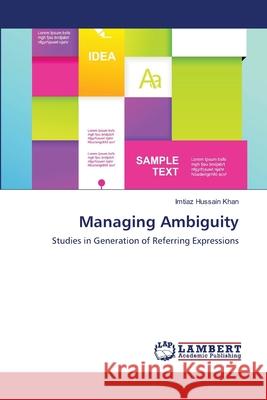Managing Ambiguity » książka
Managing Ambiguity
ISBN-13: 9783659465475 / Angielski / Miękka / 2013 / 148 str.
This book explores the role of surface ambiguities in referring expressions, and how the risk of such ambiguities should be taken into account by an algorithm that generates referring expressions, if these expressions are to be optimally effective for a hearer. The main focus is on the ambiguities that arise when adjectives occur in coordinated structures (e.g. brown cats and dogs). The central idea is to use statistical information about lexical co-occurrence to estimate which interpretation of a phrase is most likely for human readers, and to avoid generating phrases where misunderstandings are likely. Various aspects of the problem were explored in a series of experiments, including a self-study paradigm. We found a preference for ''clear'' expressions to ''unclear'' ones, but if several of the expressions are ''clear, '' then brief expressions are preferred over non-brief ones even though the brief ones are syntactically ambiguous and the non-brief ones are not. The notion of clarity was made precise using Kilgarriff's Word Sketches. The results of these empirical studies motivated the design of a GRE algorithm
This book explores the role of surface ambiguities in referring expressions, and how the risk of such ambiguities should be taken into account by an algorithm that generates referring expressions, if these expressions are to be optimally effective for a hearer. The main focus is on the ambiguities that arise when adjectives occur in coordinated structures (e.g. brown cats and dogs). The central idea is to use statistical information about lexical co-occurrence to estimate which interpretation of a phrase is most likely for human readers, and to avoid generating phrases where misunderstandings are likely. Various aspects of the problem were explored in a series of experiments, including a self-study paradigm. We found a preference for clear expressions to unclear ones, but if several of the expressions are clear, then brief expressions are preferred over non-brief ones even though the brief ones are syntactically ambiguous and the non-brief ones are not. The notion of clarity was made precise using Kilgarriffs Word Sketches. The results of these empirical studies motivated the design of a GRE algorithm.











